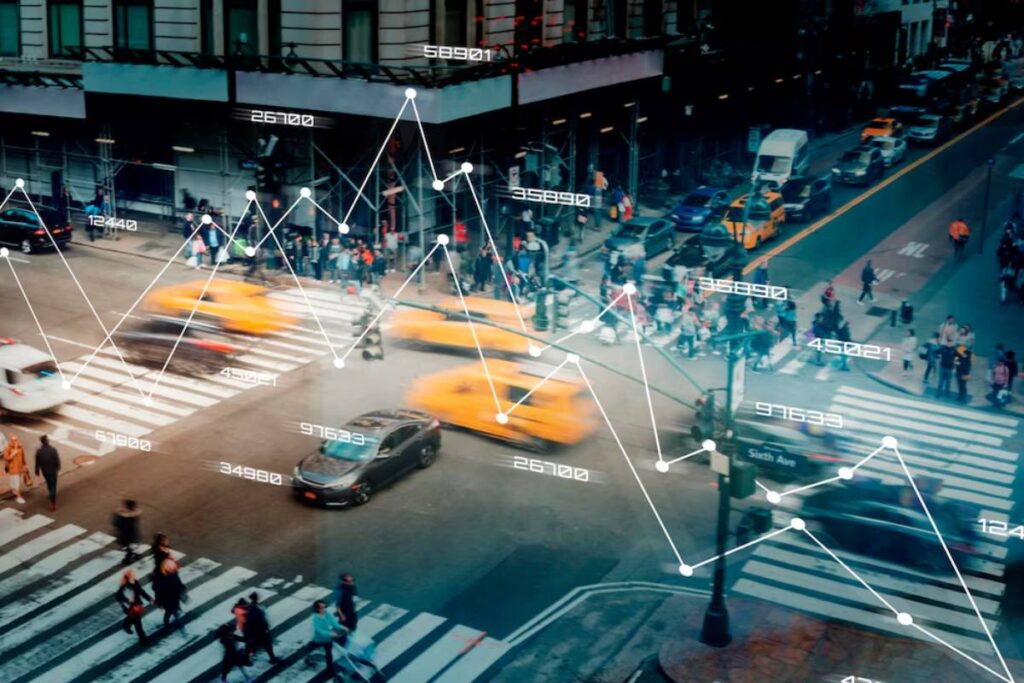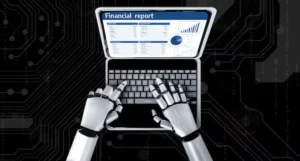The Technology Blog

AI in Traffic Management: Solving Urban Congestion
Rush-hour traffic, constant stop-and-go, and blocked intersections are big headaches in city life. Urban congestion is truly frustrating for everyone. As cities grow and more vehicles hit the roads, old traffic control methods are becoming less effective. Cities are now using a smarter, quicker, and more flexible solution: artificial intelligence.
AI traffic systems change how cities handle congestion, lower emissions, and boost road safety. These smart systems look at large amounts of real-time data. They make informed decisions, reroute vehicles, and improve traffic flow. AI is now more than a lab concept. It’s a useful tool for creating smart cities and changing how we move in the future.
This article looks at how AI is changing urban traffic management. We’ll discuss the technologies used and how cities can use these solutions to reduce congestion and improve quality of life.
What Is AI in Traffic Management?
AI traffic systems use machine learning, real-time data, and predictive analytics. They monitor, analyse, and control traffic flows effectively. Unlike traditional systems with fixed rules, AI systems learn from patterns, adapt to changes, and improve over time.
Key Components:
- Sensors and cameras: Gather live data from roads, intersections, and vehicles
- AI algorithms: Analyse traffic volume, speed, and congestion patterns
- Control systems: Adjust traffic signals, provide route suggestions, and manage incidents dynamically
- Connected infrastructure: Communicate with vehicles, pedestrians, and other systems
AI lets cities shift from fixed traffic schedules to real-time, adaptive, and efficient mobility solutions. This approach promotes sustainability and improves overall transport systems.

The Challenges of Urban Congestion
Traffic congestion impacts more than just how patient drivers are. It also leads to serious economic, environmental, and health issues.
Urban Congestion by the Numbers:
- The average commuter in a major city spends over 100 hours a year stuck in traffic.
- Congestion costs the global economy an estimated £230 billion annually.
- Vehicles idling in traffic contribute significantly to air pollution and CO₂ emissions.
Traditional solutions—like building new roads—are expensive, time-consuming, and often ineffective long-term. What cities need is smarter management, not just more infrastructure.
How AI Is Solving Traffic Problems
1. Adaptive Traffic Signal Control
One of the most impactful uses of AI in traffic systems is dynamic signal control. AI systems change traffic signals based on current conditions, rather than fixed timers.
Key Benefits:
- Shorter wait times at intersections
- Reduced congestion and emissions
- Smoother traffic flow during peak hours or emergencies
Example: Pittsburgh’s Surtrac system reduced travel times by 25% and vehicle wait times by over 40%.
2. Predictive Traffic Modelling
AI can use historical and real-time data to predict traffic trends. It can do this hours or even days ahead.
What It Can Predict:
- Congestion hotspots
- Traffic volume during events or weather changes
- Accident risk based on past patterns
Impact: Authorities can manage traffic early. They can also inform commuters about delays or alternative routes before issues arise.
3. Smart Traffic Cameras and Incident Detection
AI-powered cameras monitor intersections and motorways, detecting:
- Collisions
- Illegal lane changes
- Pedestrian crossings
- Queue lengths
Once detected, these systems automatically alert authorities or adjust traffic controls.
Result: Faster incident response and improved safety.

4. Vehicle-to-Infrastructure (V2I) Communication
In smart cities, AI enables connected vehicles to interact with traffic infrastructure.
Use Cases:
- Vehicles receive alerts about traffic signals, accidents, or road conditions
- Traffic lights adapt to approaching emergency vehicles
- Public transport systems prioritise buses during heavy congestion
Benefit: Real-time coordination reduces unnecessary stops and improves efficiency.
5. AI-Powered Public Transport Optimisation
AI can analyse commuter patterns to:
- Adjust bus and train schedules
- Improve load balancing
- Reroute services to meet changing demand
Smart mobility doesn’t just mean cars—it’s about moving people more effectively across networks.
Real-World Examples of AI in Action
A. Hangzhou, China – Alibaba’s City Brain
China’s “City Brain” uses AI to monitor over 1,000 traffic lights, analyse road camera footage, and direct emergency vehicles in real time.
Results:
- Reduced emergency response times by 50%
- Increased average traffic speed by 15%
B. Barcelona, Spain – Smart Mobility Projects
Barcelona uses AI and IoT to:
- Control traffic lights based on traffic density
- Provide real-time parking information
- Integrate traffic flow with air quality monitoring
Outcome: A cleaner, more coordinated urban transport system.
C. London, UK – Intelligent Transport Systems (ITS)
Transport for London (TfL) uses AI for:
- Adaptive signal control (SCOOT)
- Real-time congestion tracking
- Predictive modelling for city events
Impact: Improved flow across key intersections and better planning for peak demand.
Benefits of AI-Driven Mobility Solutions
1. Time and Cost Savings
Faster travel times mean reduced fuel costs, improved worker productivity, and lower public spending on congestion-related issues.
2. Environmental Sustainability
Smoother traffic leads to less idling, which cuts carbon emissions and air pollution—a key goal for smart cities targeting net-zero emissions.
3. Enhanced Public Safety
Faster detection of accidents and improved traffic flow reduces the risk of secondary collisions and improves emergency response.
4. Inclusive Transport Planning
AI can help planners design systems that serve underserved areas or adapt to changing demographic trends—making cities more accessible for all.
Challenges and Considerations
Despite the promise, implementing AI traffic systems is not without its challenges.
A. Data Privacy and Security
Traffic systems collect sensitive data from vehicles, phones, and infrastructure. Ensuring secure storage and responsible data use is essential.
B. Infrastructure Gaps
Many cities lack the foundational sensors, cameras, and connectivity needed for real-time AI integration.
C. Algorithmic Bias
If AI systems are trained on biased data, they may reinforce existing inequalities in transport accessibility or enforcement.
D. Public Acceptance
Some people might resist AI in city infrastructure. This is likely if the systems are unclear or if their benefits aren’t obvious.
Building AI-Enabled Traffic Systems: Best Practices
Cities and transport authorities that want to use AI-driven mobility solutions should focus on these key steps:
1. Start with Data Quality
High-quality, diverse, and real-time data is the backbone of any effective AI system. Invest in sensors, traffic counters, and data-sharing platforms.
2. Pilot and Scale
Start with small pilot projects. Test the systems, gather feedback, and improve the algorithms. Then, you can roll them out city-wide.
3. Involve the Community
Ensure transparency about what data is collected and how it’s used. Include citizens in conversations about smart infrastructure and mobility plans.
4. Integrate Across Departments
Traffic, public safety, urban planning, and environmental departments should work together. They need to share data and match their goals.
5. Monitor and Evolve
AI systems need regular audits. This ensures they are fair, perform well, and adapt to changing urban needs.
The Future of Urban Mobility with AI
Looking ahead, AI will continue to redefine what’s possible in urban traffic management.
What to Expect:
- Autonomous intersections that optimise vehicle flow with no signals at all
- AI-directed drone traffic integrated with road systems
- Real-time urban mobility twins—virtual simulations of cities to test traffic scenarios
- Hyper-personalised commuting routes based on user preferences and city data
The future isn’t just about better journeys. It’s also about creating cleaner, safer, and more human-focused cities.
Smarter Streets for Smarter Cities
AI in traffic management isn’t just a tech upgrade—it’s a necessity for modern, growing cities. By deploying AI traffic systems, we can untangle congestion, improve safety, and support the development of more sustainable, efficient urban environments.
AI will be central to smart cities as they grow. It will help us move not only faster but also smarter and more responsibly. The result? Cities that breathe easier, move quicker, and function better for everyone.
Act now: If you’re a city planner, tech innovator, or a commuter, engage with mobility solutions. Support AI on our roads for a future that moves smoothly and thinks smartly.









